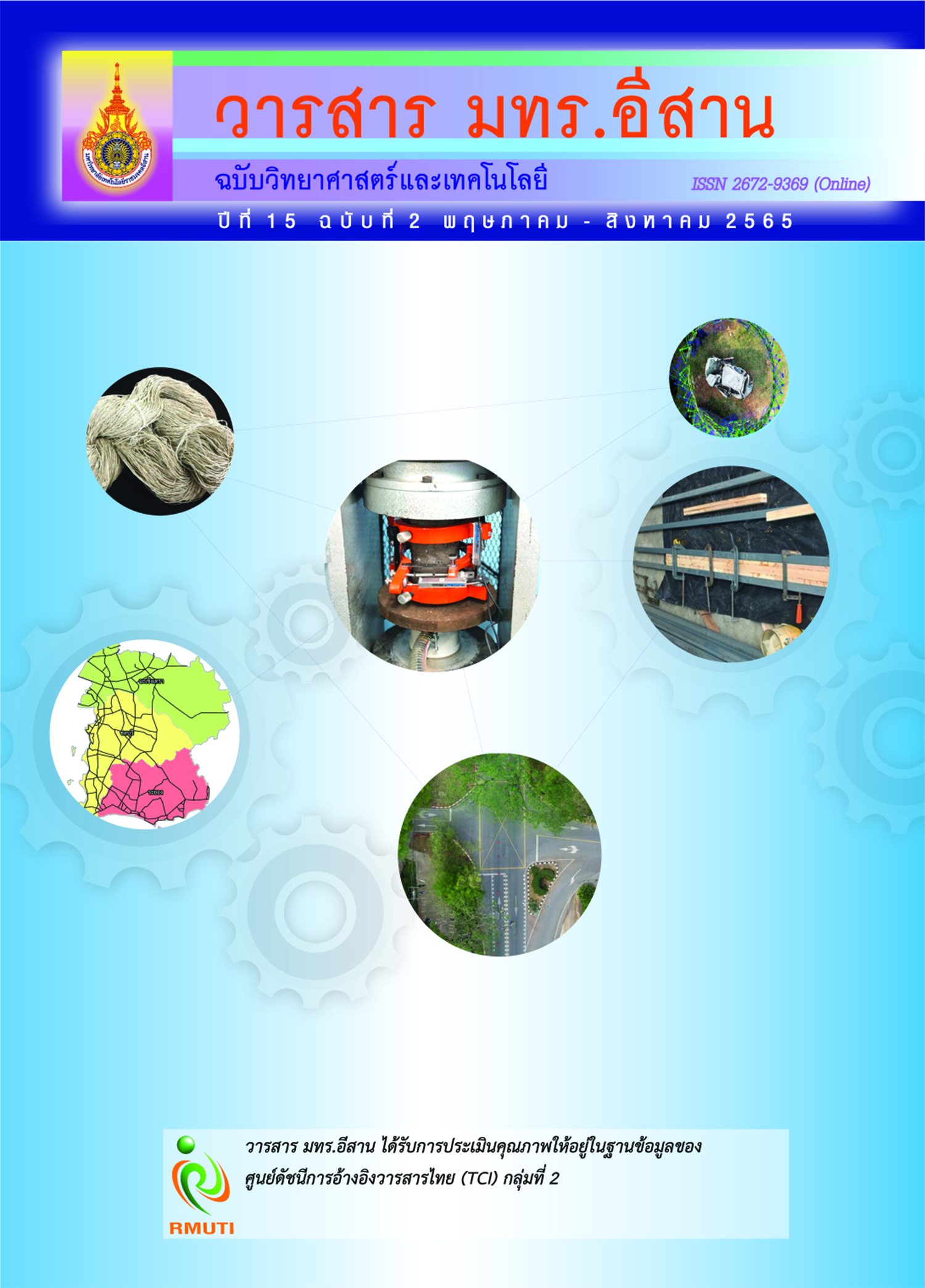Group Acceptance Sampling Plan Based on Power Lindley Distribution and Application for Lifetime Data
Main Article Content
Abstract
A group acceptance sampling plan (GASP) for product lifetime data based on power Lindley distribution (PLD) was proposed along with the minimum group sizes, operating characteristic function values, the minimum ratios for the producer’s risk
= 0.05 under different conditions. In addition, the proposed GASP was applied to an actual data. The results showed that the proposed GASP could efficiently determine whether to accept or reject the product. In addition, the presented group acceptance sampling plan provided a minimum sample size for testing the product quality with a higher specified number or the greater a.
Article Details

This work is licensed under a Creative Commons Attribution-NonCommercial-NoDerivatives 4.0 International License.
References
Srinivasa, R. G. (2009). A Group Acceptance Sampling Plans for Lifetimes Following a Generalized Exponential Distribution. Economic Quality Control. Vol. 24, No. 1, pp. 75-85
Aslam, M., Ahmad, M., and Mughal, A. R. (2010). Group Acceptance Sampling Plan for Lifetime Data Using Generalized Pareto Distribution. Pakistan Journal of Commerce and Social Sciences. Vol. 4, No. 2, pp. 185-193
Lindley, D. V. (1958). Fiducial Distributions and Bayes’ Theorem. Journal of the Royal Statistical Society: Series B (Methodological). Vol. 20, No. 1, pp. 102-107. DOI: 10.1111/j.2517-6161.1958.tb00278.x
Shanker, R. and Mishra, A. (2013a). A Two Parameter Lindley Distribution. Statistics in Transition New Series.Vol. 14, No. 1, pp. 45-56
Shanker, R. and Mishra, A. (2013b). A Quasi Lindley Distribution. African Journal of Mathematics and Computer Science Research. Vol. 6, No. 4, pp. 64-71. DOI: 10.5897/AJMCSR12.067
Ghitany, M. E., Al-Mutairi, D. K., Balakrishnan, N., and Al-Enezi, L. J. (2013). Power Lindley Distribution and Associated Inference. Computational Statistics & Data Analysis. Vol. 64, pp. 20-33. DOI: 10.1016/j.csda.2013.02.026
Khalleefah, M., Ostrovska, S., and Turan, M. (2019). Power Lindley Distribution and Software Metrics. arXiv:1907.00668v1 [math.ST]. DOI: 10.48550/arXiv.1907.00668
Rather, A. A. and Ozel, G. (2020). The Weighted Power Lindley Distribution with Applications on the Life Time Data. Pakistan Journal of Statistics and Operation Research. Vol. 16, No. 2, pp. 225-237. DOI: 10.18187/pjsor.v16i2.2931
Zimmer, W. J., Keats, J. B., and Wang, F. K. (1998).The Burr XII Distribution in Reliability Analysis. Journal of Quality Technology. Vol. 30, Issue 4, pp. 386-394. DOI: 10.1080/00224065.1998.11979874
Gui, W. and Aslam, M. (2017). Acceptance Sampling Plans Based on Truncated Life Tests for Weighted Exponential Distribution. Communications in Statistics - Simulation and Computation. Vol. 46, Issue 3, pp. 2138-2151. DOI: 10.1080/03610918.2015.1037593
Lio, Y. L., Tsai, T. -R., and Wu, S. -J. (2010). Acceptance Sampling Plans from Truncated Life Tests Based on the Burr Type XII Percentiles. Journal of the Chinese Institute of Industrial Engineers. Vol. 27, Issue 4, pp. 270-280. DOI:10.1080/10170661003791029
Gupta, L. P., Gupta, R. C., and Lvin, S. J. (1998). Numerical Methods for the Maximum Likelihood Estimation of Weibull Parameters. Journal of Statistical Computation and Simulation. Vol. 62, Issue 1-2, pp. 1-7. DOI: 10.1080/00949659808811921


